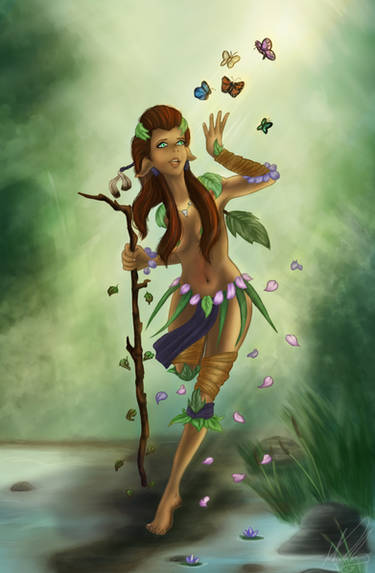ShopDreamUp AI ArtDreamUp
Deviation Actions
Suggested Deviants
Suggested Collections
You Might Like…
Description
Like I said, I will be practicing realism, semi-realism paintings for awhile to get the hang of anatomy and shadows.
Tonal is the best way to do this as you aren't subjected too trying to figure out all the colours, but rather just the shades.
Obviously this is very referenced, as that is the point of anatomy practice. I didn't trace, eyeballed the initial outline, then painted everything in trying to get the curves of his face to blend with the different shadows.
Referenced from this image: [link]
It was a nice, clear big image to reference from that's why I chose this.
Nathan Drake is one of my favourite video game character's of all time, naturally had to start with him!
comments?
Nathan Drake (c) Naughty Dog
Painting/tonal (c) *Master-Mune
Tonal is the best way to do this as you aren't subjected too trying to figure out all the colours, but rather just the shades.
Obviously this is very referenced, as that is the point of anatomy practice. I didn't trace, eyeballed the initial outline, then painted everything in trying to get the curves of his face to blend with the different shadows.
Referenced from this image: [link]
It was a nice, clear big image to reference from that's why I chose this.
Nathan Drake is one of my favourite video game character's of all time, naturally had to start with him!
comments?
Nathan Drake (c) Naughty Dog
Painting/tonal (c) *Master-Mune
Image size
1962x933px 514.26 KB
© 2011 - 2024 PolyMune
Comments7
Join the community to add your comment. Already a deviant? Log In
This is great. There's no better way to study light and shadow than doing simple b/w like these. One critique with these two images is that you didn't use pure white as a tone, which would make a big difference imho. To go a step further, I also recommend trying to render it in two tones: black and white only.
To boil it down, the use of tone is really a means to trick the eye to see a 3-d shape in a 2-d image. So, the exercise is really one of grasping 3-d shapes and how they interact with light. You've done an excellent job for the most part - particularly the hair, chin, and the left side of his face (our right) - while the right side of his face (contours under the eye) and parts of the nose feel less convincing.
One approach I use is to do a quick sculpting of areas I find troublesome. I find my kneadable erase to be excellent for this purpose. Creating the 3-d shape helps me to grasp how I can better illustrate it in 2-d.
Another trick I would recommend is to utilize photoshop's filters to compare your tonal interpretation to that of the program's algorithms. By no means is photoshop the benchmark, but the comparison is an interesting exercise. The idea is to see if you've misrepresented any of the 3D shape of the image when doing such an exercise.
Take your ref photo, convert it grayscale. Then put it through a blurring filter (like Smart Blur - radius 3, threshold 15) to eliminate the photo's skin pore details (which get in the way of the study.) Then use the poster edges filter (edge thickness 0, intensity 1, posterization 0, 1 or 2, depending on the number of tones you want to see.)
All in all, this is a fantastic job and a very worthwhile exercise!
(Please disregard my star ratings as they don't seem to apply well to this exercise.)





















![[MMD] Ostrheinsburg Castle Throne Room STAGE](https://images-wixmp-ed30a86b8c4ca887773594c2.wixmp.com/i/37ce6fbb-8c37-466f-b97f-4d417e05c3b9/dbt68c8-d575b7e3-3db8-4b63-823d-3941cfeba91f.jpg/v1/crop/w_184)




![[2] LITTLE INDUSTRY](https://images-wixmp-ed30a86b8c4ca887773594c2.wixmp.com/f/7891f669-b35d-4933-b65b-ddc41a715e5e/dej1ll0-27559edf-00ed-47a0-8ace-15f803c79a40.png/v1/crop/w_184)






